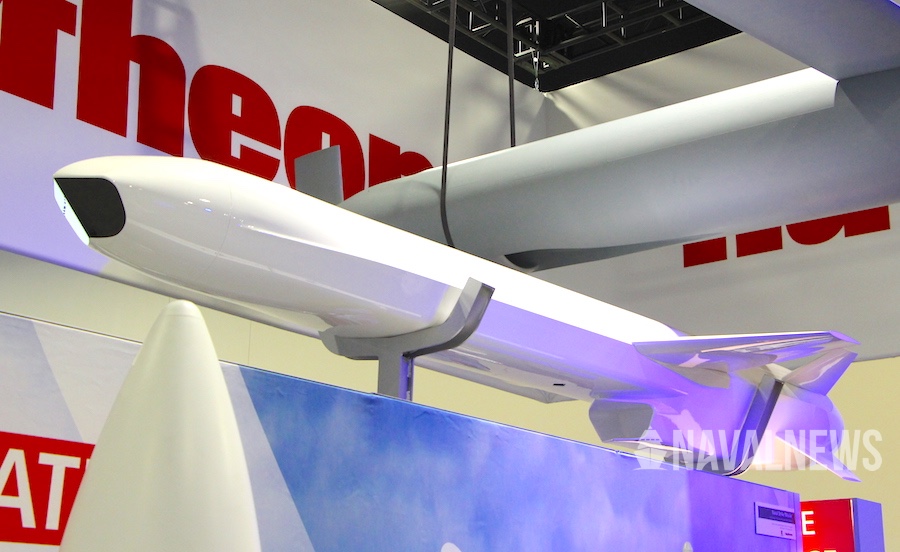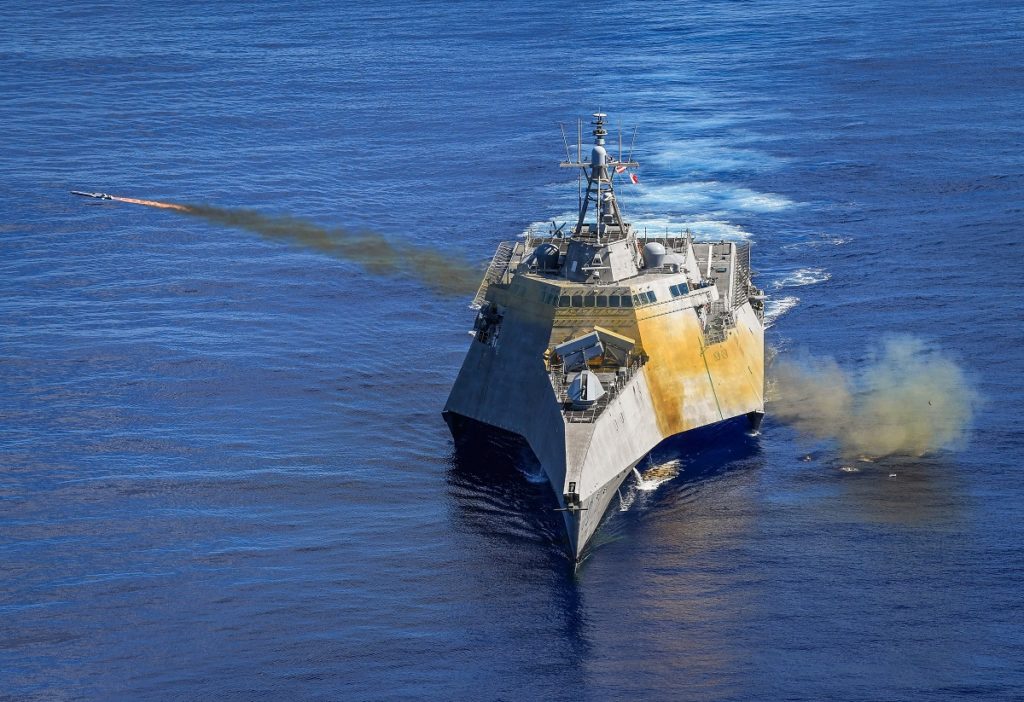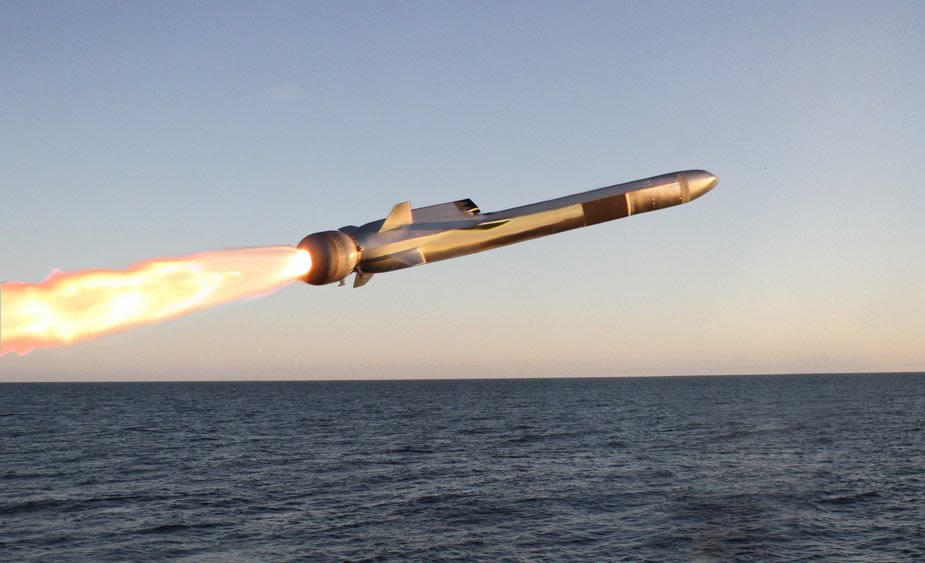The USMC confirmed to Naval News the test was successful in validating certain technologies and capabilities.
The initial mention of this test surfaced in the latest Director Operational Test and Evaluation (DOT&E) report on the Over-The-Horizon Weapon System (OTH-WS), the official U.S. Navy name for the program. The report reads: “The Marine Corps planned a live firing of an NSM from a JLTV-based mobile launch platform in June 2020, but postponed the event after discovering a software misconfiguration on the missile. The Marine Corps intends to conduct this live fire event in November 2020.”
Asked by Naval News whether the test did take place in November, a USMC public affairs officers said:
“Yes the test event did take place as planned in November and the only additional info I can provide is that it was successful in validating certain technologies and capabilities. The only other comment I would add is that the Marine Corps is investing in technologies to ensure we maintain our competitive edge. Ground Based Anti-ship Missile redefines the battlespace for our adversaries and ensures that we maintain our competitive edge.”
Emanuel “Manny” Pacheco, Director of Public Affairs & Communication, Marine Corps Systems Command
Pacheco added that “test photos will not be cleared for release at this time”. Contacted by Naval News for an illustration of the “JLTV-based mobile launch platform”, Oshkosh Defense (the manufacturer of the vehicle) referred us to the USMC, who told us:
At this time I have no releasable imagery as it relates to this program.
USMC PAO
As we reported previously, the USMC selection of Naval Strike Missiles from Raytheon was first announced in May 2019. Naval News understands that the USMC will likely integrate the NSM on an unmanned variant of the Joint Light Tactical Vehicle (JLTV) vehicles similar to the one used for “ROGUE Fires”:

NSM program update with Raytheon

In light of this program milestone, Naval News contacted Randy Kempton, director of the NSM, JSM and Tomahawk programs at Raytheon to get an update on the NSM program (both domestic and international) from an industry’s perspective.
NSM production in the United States
Asked if Raytheon now has the ability to produce NSM in the United States, Randy Kempton explained:
Not only have we been busy integrating and deploying NSM for the US Navy, we’ve been standing up domestic supply chains and manufacturing capability. The fire control suites (FCS) are being delivered by Ducommun, one of our US suppliers, we’ve established a production line in our Louisville facility to manufacture the canister/launcher, and missiles are now being delivered out of our Tucson facility.
Randy Kempton, director of the NSM, JSM and Tomahawk programs
NSM Coastal Defense System for Romania
In October, 2020, the US government formally notified Congress of a potential sale of NSM Coastal Defense System to Romania. Commenting on this matter, Kempton added “Romania announced in January that the government forwarded draft legislation to Parliament which would authorize the purchase of NSM CDS. That legislation is still under consideration by Parliament.”
UK’s ISSGW
Asked about other ongoing international competitions in which NSM may be competing, Raytheon’s head of NSM program told Naval News that NSM is a highly capable missile that can be either ship- or vehicle-launched:
We are always evaluating the needs across the International Navies and have a competitive offering should they have a requirement. We’re closely following the UK’s ISSGW competition and have a solution that meets or exceeds their requirements and can be fielded rapidly as we did with USS Gabrielle Giffords.
For the record, the I-SSGW contract is set to be awarded sometime by this summer, following a statement by Jeremy Quin, Minister of State for the Ministry of Defence made in December 2020. The Royal Navy’s surface fleet (Type 23 frigates and some of the Type 45 destroyers) currently deploys with Harpoon Block 1C procured back in the 1980s. The ageing system was set to reach its end of shelf life in 2018, but this has been pushed back to 2023.
JSM for OASuW Increment 2 ?
Answering our question regarding Raytheon’s intent to bid in the OASuW Increment 2 competition with the JSM or with a different missile, Randy Kempton replied:
The Joint Strike Missile is a highly capable missile being developed by Norway to be internally carried on its F-35. As we did with NSM, we’re evaluating US Navy and US Air Force requirements to determine if JSM fits these requirements.
The Joint Strike Missile (JSM) is an air launched variant of the Naval Strike Missile (NSM) with ability to attack sea and land based targets. It is in development for the Norwegian Armed Forces and has been procured by Japan.
As we reported previously, OASuW Increment 2 will deliver long-term anti-surface warfare (ASuW) capabilities to counter future threats. The United States DOD continues to plan for OASuW Increment 2 to be developed via full and open competition, and Initial Operational Capability is anticipated FY28-30. Due to congressional budget reductions for OASuW Increment 2, the U.S. Navy funded an incremental upgrade the Lockheed Martin Long Range Anti-Ship Missile (which won the OASuW Increment 1 competition following a U.S. Pacific Fleet Urgent Operational Need generated in 2008). This upgrade, known as LRASM 1.1, is set to bridge the gap until an OASuW Increment 2 program of record is established.
About the US Navy’s OTH-WS Program

According to the DOT&E report, the OTH-WS program is a long-range, surface-to-surface warfare system intended to engage maritime targets both inside and beyond the radar horizon. The system consists of an operator interface console, Naval Strike Missile (NSM), and the Missile Launching System.
The NSM is an offensive missile with an imaging infrared seeker and utilizes a semi-armor-piercing warhead optimized for anti-surface warfare.
The OTH-WS is a stand-alone system requiring minimal integration into the host platform. The OTH-WS will receive targeting data via tactical communications from combatant platforms or airborne sensors and requires no guidance after launch. The Navy intends to integrate the OTH-WS on the Littoral Combat Ship (LCS) variants; guided-missile frigate, FFG(X); and amphibious LPD-class ships. The Marine Corps is also acquiring the NSM to install on the Navy/Marine Expeditionary Ship Interdiction System, which places an NSM launcher on an unmanned Joint Light Tactical Vehicle (JLTV)-based mobile launch platform.
About Naval Strike Missile (RGM-184A NSM Block 1)

NSM has an operational range of 185 Km (100 nautical miles) and a high subsonic speed. It uses Inertial, GPS and terrain-reference navigation and imaging infrared homing (with a target database aboard the missile).
The NSM is a fifth generation anti-sip missile, produced by Kongsberg and managed in the U.S. by Raytheon. NSM reached Initial Operational Capability on the new Norwegian Fridtjof Nansen-class frigates and the Norwegian Skjold Class corvettes in 2012. It is also fielded by the Polish Navy (coastal defense batteries) and has been selected by the navies of Malaysia and Germany. NSM was also selected in 2018 as the winner of the U.S. Navy Over-The-Horizon Weapon System (OTH WS) competition and by the USMC in 2019. Its U.S. Navy designation is RGM-184A NSM Block 1.






